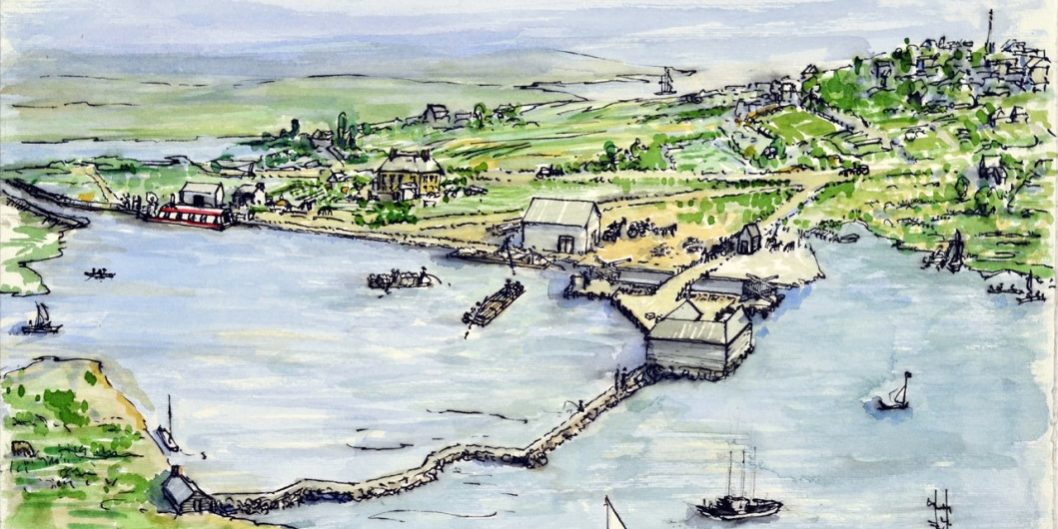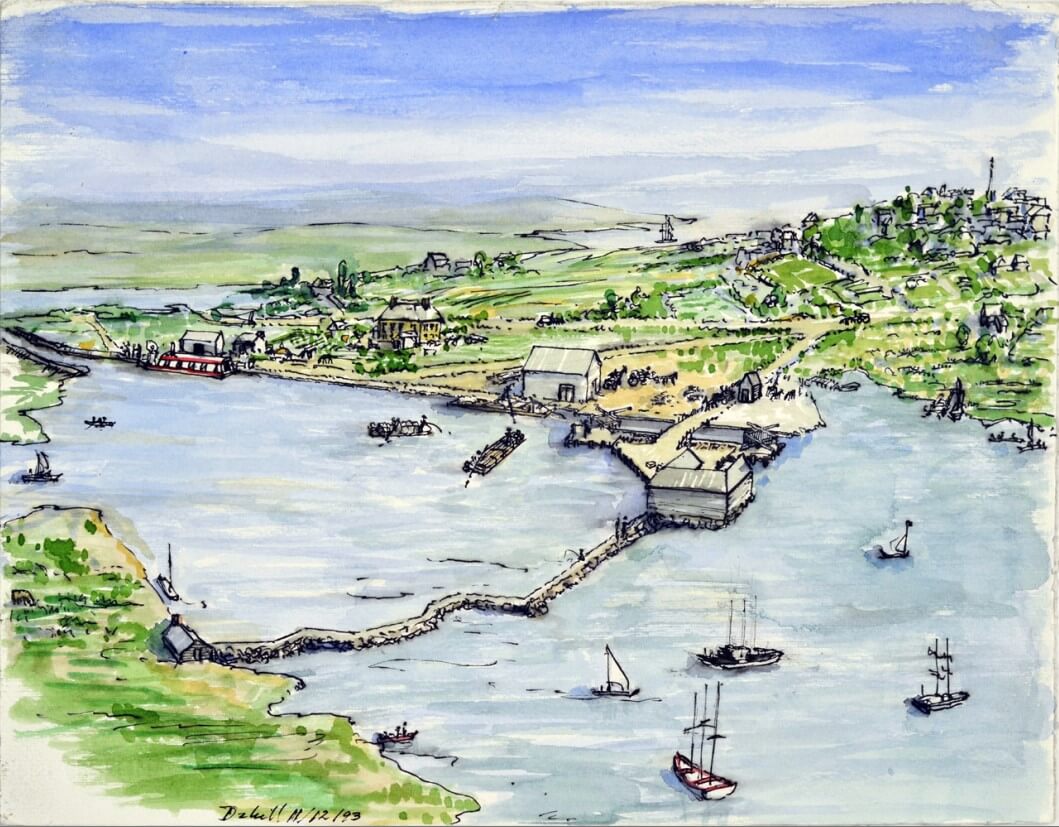Tide Power in Colonial Boston
To fuel mills for producing flour, fabric, lumber and even chocolate, innovators in colonial Boston turned to the power of the tides. Tide Power in Colonial Boston—tells the story of the development and use of tide mills in the city.
“For 150 years prior to the industrial revolution, the tides sustained many industries in Boston,” said Duane Lucia, West End Museum Curator. “The story of the creation of dams and mill ponds—both the successes and failures—as well as their ultimate demise is fascinating.”
Tide Power in Colonial Boston explores the mechanisms of the mills and trades they supported. Historical maps illustrate the role of Boston’s topography in the construction of the mills and the demand for land-making which contributed to their downfall.
The rise and fall of tides have been harnessed for energy since Roman times. The earliest known tide mills date back to sixth-century Ireland. As the tides come in, sea water enters into a reservoir called a mill pond. When the tides recede, the stored water is released to turn a water wheel which powers the mill.
Around 1630, a settler named Crabtree attempted to extend an island in Boston’s North Cove—approximately where Causeway Street is today—to build a dam and form a tidal mill pond. The task proved to be too much for one person, so he soon abandoned the project. Thirteen years later, Henry Symons and five associates were granted the rights to the Cove on the condition that they construct a mill pond and erect one or more mills. They succeeded and, for the next 150 years, no fewer than five tide mills operated there.
But, as the population grew, so did the demand for land. This coincided with the dawn of a new industrial era, which spurred much larger factories that could not be sustained by tide power. The exhibit concludes with the great failure of Uriah Cotting’s plan to dam the Back Bay to build multiple tide mills.


